
New releases
A smarter, simpler Attentive
Explore new features →
Explore new features →
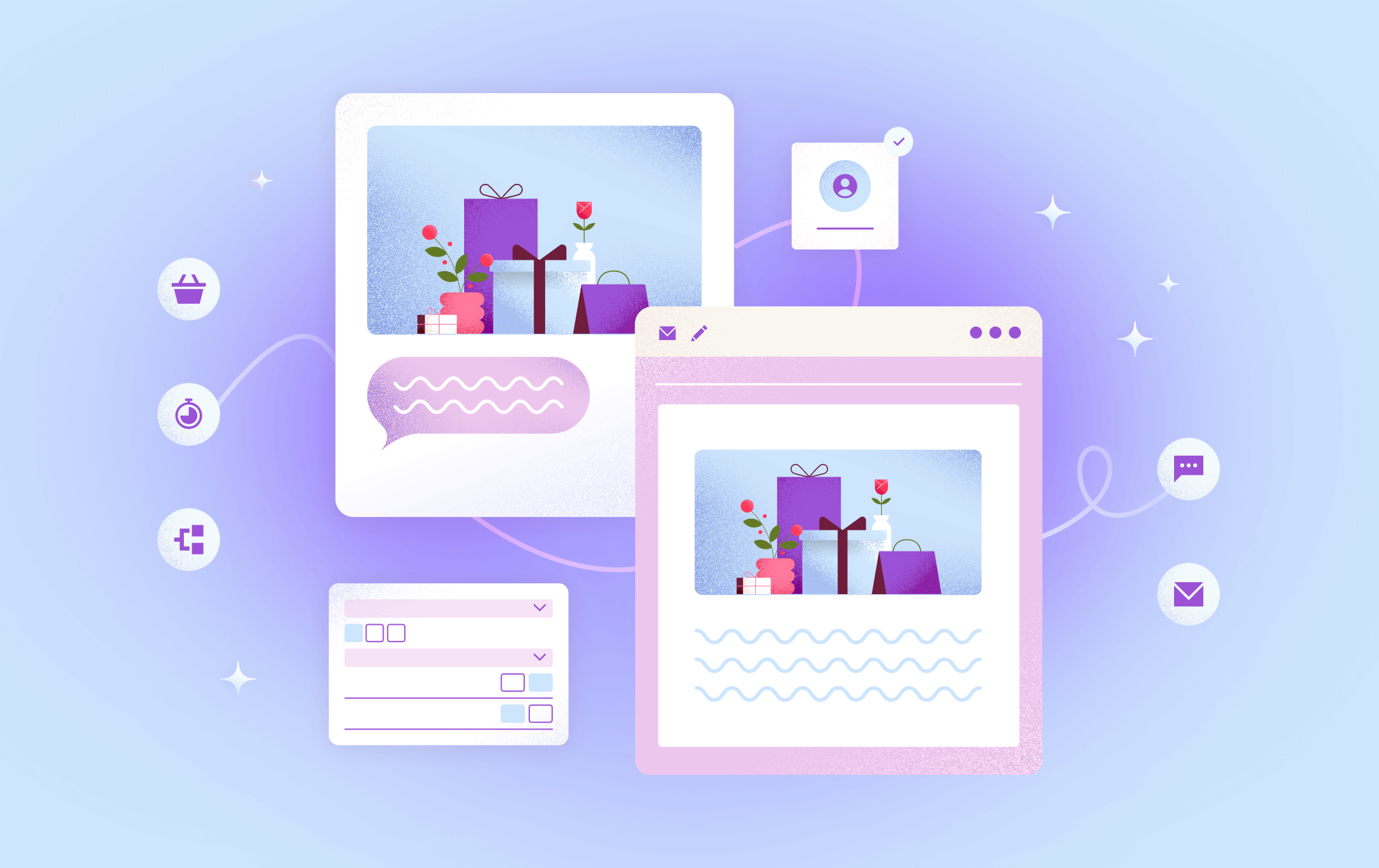
The days of treating email and SMS as separate marketing channels are fading away. It’s become increasingly clear, these two powerhouses work best when they're orchestrated together—not just running in parallel, but truly coordinated to create enjoyable customer experiences that drive measurably better results.
According to Gartner, marketing budgets have flatlined at 7.7% of company revenue in 2025. Several factors have contributed to this standstill, notably the macroeconomic uncertainty that has prompted cautious spending. Your efforts are likely being focused on maximizing ROI from existing resources through the strategic use of AI and data analytics.
The numbers make a compelling case, subscribers engaged through both email and SMS are 2.0x - 2.8x more valuable from a revenue perspective than single-channel subscribers. They also convert faster, which means you can reduce send frequency while maintaining—or even improving—your ROI.
So consider this, what if you could identify which customers prefer SMS engagement and focus your text messaging budget there, while reaching the rest through email? What if AI could determine the perfect send time for each individual across both channels? What if your campaigns could automatically retarget non-engagers from email with a perfectly-timed SMS follow-up?
This isn't theoretical—it's happening right now. It’s time to move beyond channel silos.
Whether you're currently managing these channels separately or looking to optimize an existing unified approach, this guide will help you unlock the full potential of coordinated email and SMS marketing.
Before we can even talk about multi-channel orchestration, we have to start with identity.
What does it mean? Identity means recognizing opted-in subscribers who visit a website. When we refer to identity for email marketing, we mean that if an opted-in email subscriber visits your site, we can tie that visitor back to that email address.
What does identity have to do with multi-channel orchestration?
For orchestration to be possible, a person needs to opt in to get messages on more than one channel, and those profiles must be connected internally.
This approach helps maintain a more complete view of each individual across different data structures, enabling communication through multiple channels even when information is distributed across separate records.
But it’s not just identifying emails and phone numbers. For orchestration to make an impact, connected or unified profiles need to have a lot of useful data attached to them, such as shopping data, engagement data, and more.

Identity resolution connects different pieces of information about the same person, even when they're stored separately. When the system recognizes one identifier (like an email address), it can enrich all related records—including both email and SMS profiles.
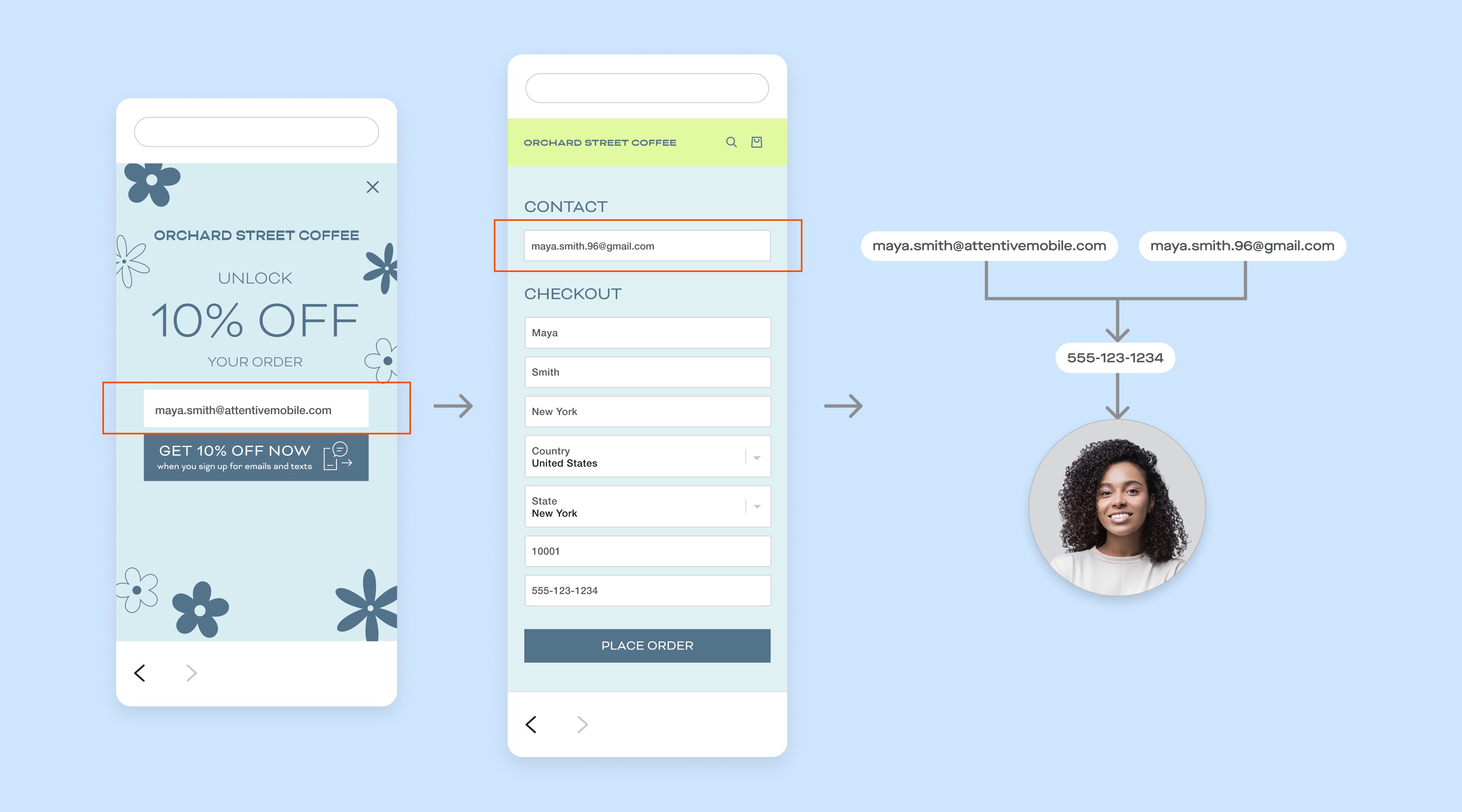
The key benefit: When someone interacts anywhere using one identifier, all their connected profiles get updated with that new information, creating a more complete picture of their engagement across channels.
This is where channel preferences are captured. The sign-up experience is typically the first (but not only, more on that later) opportunity to collect opt-ins for multiple channels simultaneously.
Multi-channel orchestration requires unified profiles with multiple contact points. The sign-up unit is where these profiles are either created (for new customers) or completed (for existing customers missing a channel). Starting orchestration at this point means every subsequent customer interaction—welcome series, abandoned cart, post-purchase—can use multiple channels strategically rather than being limited to whatever single channel happens to be available.
Use flexible cross-channel strategies to maximize your revenue.
Welcome journeys are crucial for engaging new subscribers across multiple channels right from the start. Use engagement-based branching to decide whether to send coupon reminders and follow-ups via SMS, email, or both. This ensures you reach subscribers on their preferred channels, increasing engagement and conversion.
Multi-channel subscribers are twice as likely to purchase and convert faster, so optimizing your welcome journey with cross-channel promotion is a high-impact strategy to boost the lifetime value of new subscribers from day one.
We recommend optimizing your sends based on three different engagement patterns. If a subscriber is:
Key consideration: While these subscribers show strong engagement on both channels, strategic sequencing and thoughtful spacing are critical to avoid message fatigue and optimize conversion timing.
Key consideration: Since this subscriber has shown SMS preference, don't over-invest in email touchpoints, but don't give up on it entirely—they may still check email passively.
Key consideration: Email allows for more touchpoints without the cost concern of SMS, so you can be more generous with follow-ups.
Beyond the welcome series, systematic cross-channel conversion should continue throughout the customer lifecycle.
For Email-Only Subscribers:
For SMS-Only Subscribers:
Abandoned cart journeys should use channel affinity (where the subscriber most recently engaged) to send the first touchpoint on their preferred channel, maximizing the likelihood of conversion. While channel affinity determines which channel to use first, AI send-time optimization (more on this later) ensures that a message reaches them when they're most likely to engage.
However, this strategy must work within SMS carrier guidelines while taking advantage of email's flexibility for additional touchpoints.
Before diving into strategy, understand these non-negotiable rules.
Optimizing your abandonment message strategy
Your abandonment strategy should flex based on which channels are available to each subscriber. Without this flexibility, you may find yourself in a challenging position: either moving too slowly and missing the conversion window, being overly cautious and leaving revenue on the table, or sending too many messages and risking opt-outs.
Tailor your approach based on SMS and email subscriber status within your abandonment journeys.
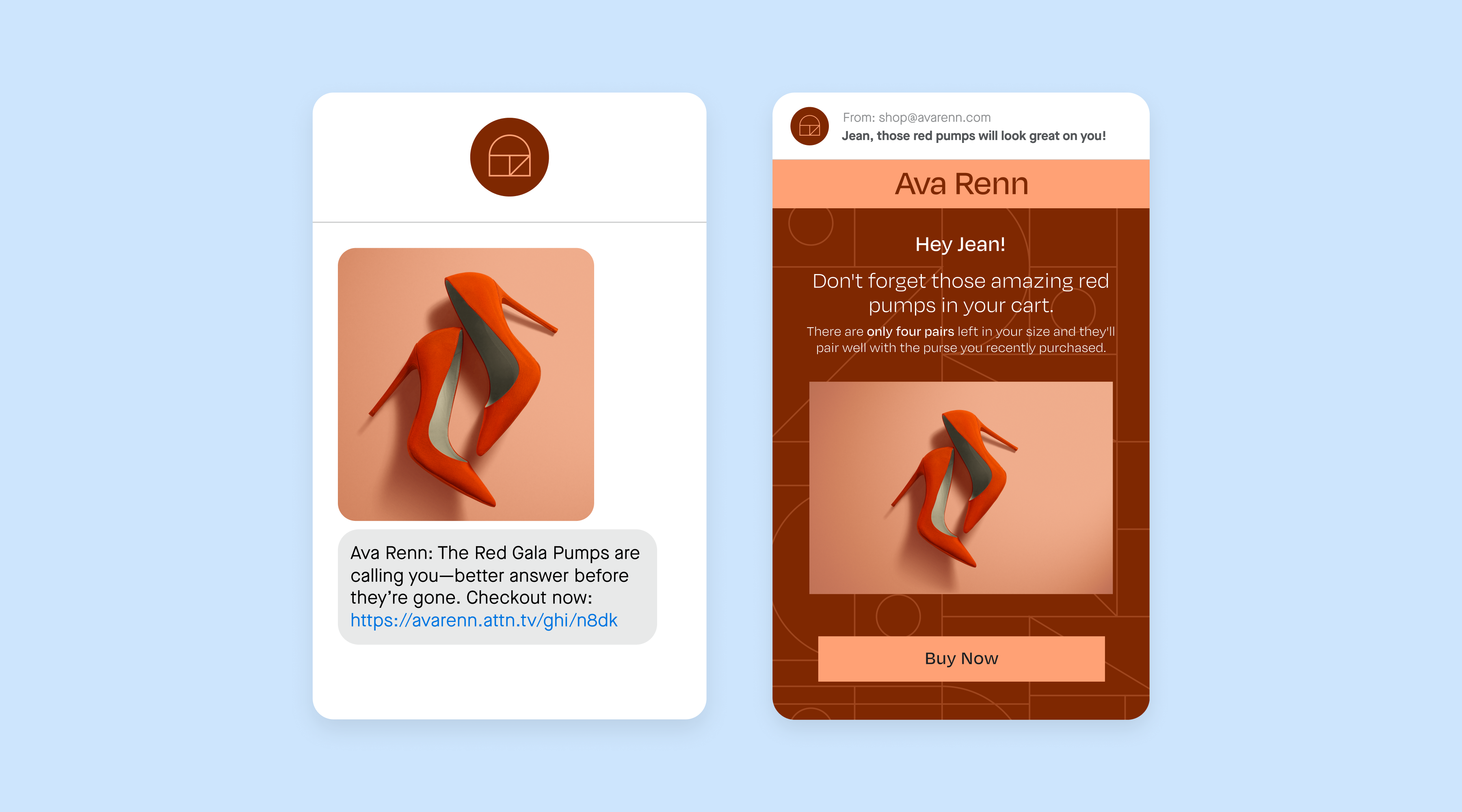
The post-purchase window represents one of your highest-value engagement opportunities. These customers have already demonstrated purchase intent and trust in your brand, making them significantly more cost-effective to retain than acquiring new customers—about five times less expensive, in fact.
Post-purchase messaging across email and SMS generates strong performance metrics, with an average click-through rate of 24%, conversion rate of 10%, and revenue per send of $2.50. The key is understanding how to strategically deploy both channels to maximize engagement without overwhelming your customers.
Orchestrating SMS and email for post-purchase success
The most effective post-purchase strategy leverages both channels sequentially, starting with SMS for its immediacy and high engagement, followed by email for detailed content and visual storytelling.
Start with an SMS message that provides immediate value—whether that's thanking the customer, promoting your loyalty program, or encouraging a review. SMS post-purchase messages benefit from the channel's high engagement rates and immediate visibility.
Sample SMS messages:
Follow up with email for richer content that can include:
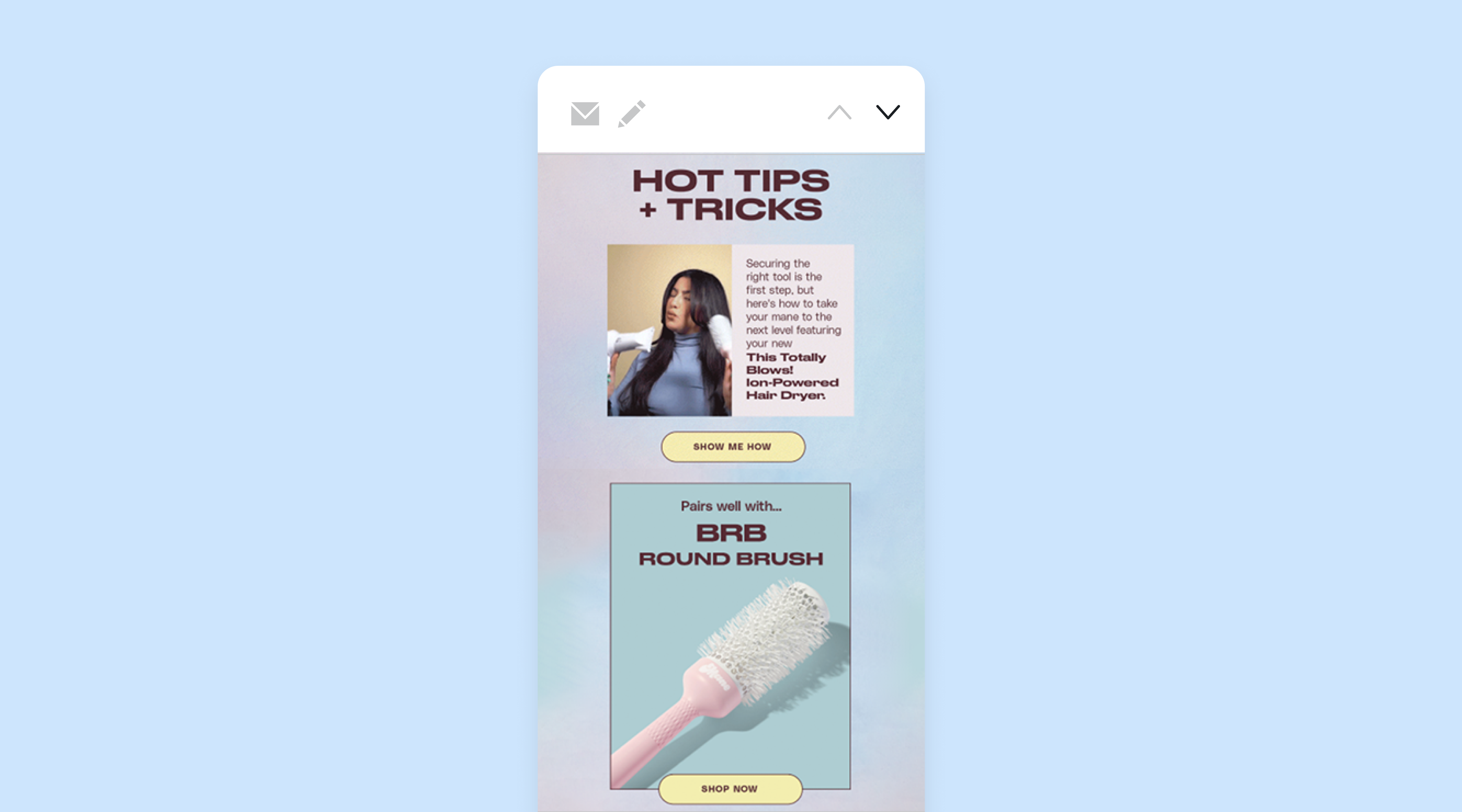
When an abandonment event gives you a valuable opportunity to reach someone who's been disengaged, it's worth considering a more robust approach. Without channel-specific strategies, you might miss the chance to use heightened incentives or extended messaging sequences that could successfully bring them back.
The opportunity: Use SMS and email engagement history to inform your recovery tactics.
Not every subscriber will opt into both channels at sign-up, and that's okay. The key is having a systematic approach to convert single-channel subscribers over time, turning them into your most valuable multi-channel audience.
If a shopper has signed up for email but not SMS, marketers should follow up with a targeted email sent exclusively to email-only subscribers.
Rather than creating separate email campaigns for different subscriber segments, you can use display conditions to show or hide specific content blocks within a single email based on subscriber attributes. This approach is particularly powerful for cross-channel promotion, allowing you to deliver personalized messaging at scale without multiplying your campaign workload.
For example, you can include a dedicated content block in your promotional emails that encourages email-only subscribers to sign up for SMS—highlighting benefits like early access to sales or exclusive text-only offers. This block would be hidden from subscribers who are already receiving SMS messages, ensuring they see relevant content instead.
With Attentive's display conditions feature, you can create targeted experiences by setting simple rules based on subscriber attributes. A condition might look like: Show this SMS sign-up block if {{subscriber.smsSubscriptionStatus}} is not subscribed. This means you can maintain a single email template while delivering personalized experiences that drive cross-channel list growth—without creating separate campaigns or cluttering messages with irrelevant CTAs for multi-channel subscribers.

This strategy is especially effective because it allows you to consistently promote channel expansion across all your campaigns, turning every email send into an opportunity to build your multi-channel subscriber base.
Traditional email and SMS campaigns operate on a batch-and-blast model: every subscriber receives your message at the exact same moment, regardless of when they're most likely to engage. This one-size-fits-all approach leaves significant revenue on the table.
Send Time AI changes this dynamic entirely by leveraging Attentive AI™️ to identify the time of day each unique subscriber is most likely to engage with a text or email message. Instead of sending to your entire audience simultaneously, messages are individualized and delivered throughout the day based on each subscriber's optimal engagement window.
How AI determines optimal send times
Send Time AI analyzes multiple data points to predict when each subscriber will be most receptive:
This creates a sophisticated understanding of individual behavior. For example, one subscriber might consistently engage with SMS messages during their lunch hour (12:00–1pm) but checks email in the evening around 7pm. Another might be an early-morning email reader but ignores SMS until after work. Send Time AI identifies these patterns and schedules messages accordingly—across both channels.
The compounding effect of channel and timing optimization
When you combine channel preference with send-time optimization, you're making two critical decisions that multiply your effectiveness:
This dual optimization creates a compounding effect. You're not just sending the right message on the right channel—you're delivering it at the precise moment when that individual subscriber is most likely to engage. The result is reduced message fatigue, improved open and conversion rates, and maximized ROI from your marketing spend.
One of the most powerful orchestration tactics is using SMS as a strategic recovery mechanism when email engagement falls short. This isn't about sending more messages—it's about sending smarter messages on the channel most likely to break through.
When a dual-channel subscriber receives an abandonment email but doesn't engage within 4-8 hours, trigger an SMS follow-up delivered in a timely manner to capitalize on the urgency of an abandonment.
Critical guardrails:
And remember your SMS follow-up shouldn't repeat your email. Use SMS for urgency, scarcity, or incremental incentives.
Cross-channel recovery transforms non-engagement from a dead end into an opportunity, automatically retargeting email non-engagers with perfectly-timed SMS to capture revenue that would otherwise be lost.

Coordinating your email and text messaging programs strategically can dramatically improve subscriber engagement and return on investment. Understanding how subscribers interact across channels and tailoring your approach accordingly is essential for maximizing the value of your marketing efforts.
We talked about how subscribers who engage with both email and text messages are twice as valuable in terms of lifetime value and purchase rates. This highlights the importance of cross-channel engagement in your communication strategy.
However, channel preferences vary widely. Text messaging generally drives higher engagement, with text subscribers showing stronger response patterns than email-only subscribers, regardless of whether they use one or multiple channels.
A key insight: disengagement often spans both channels. If a subscriber is unresponsive on text, there's a 94% chance they're also unengaged via email, and vice versa. This emphasizes the need to understand engagement patterns holistically.
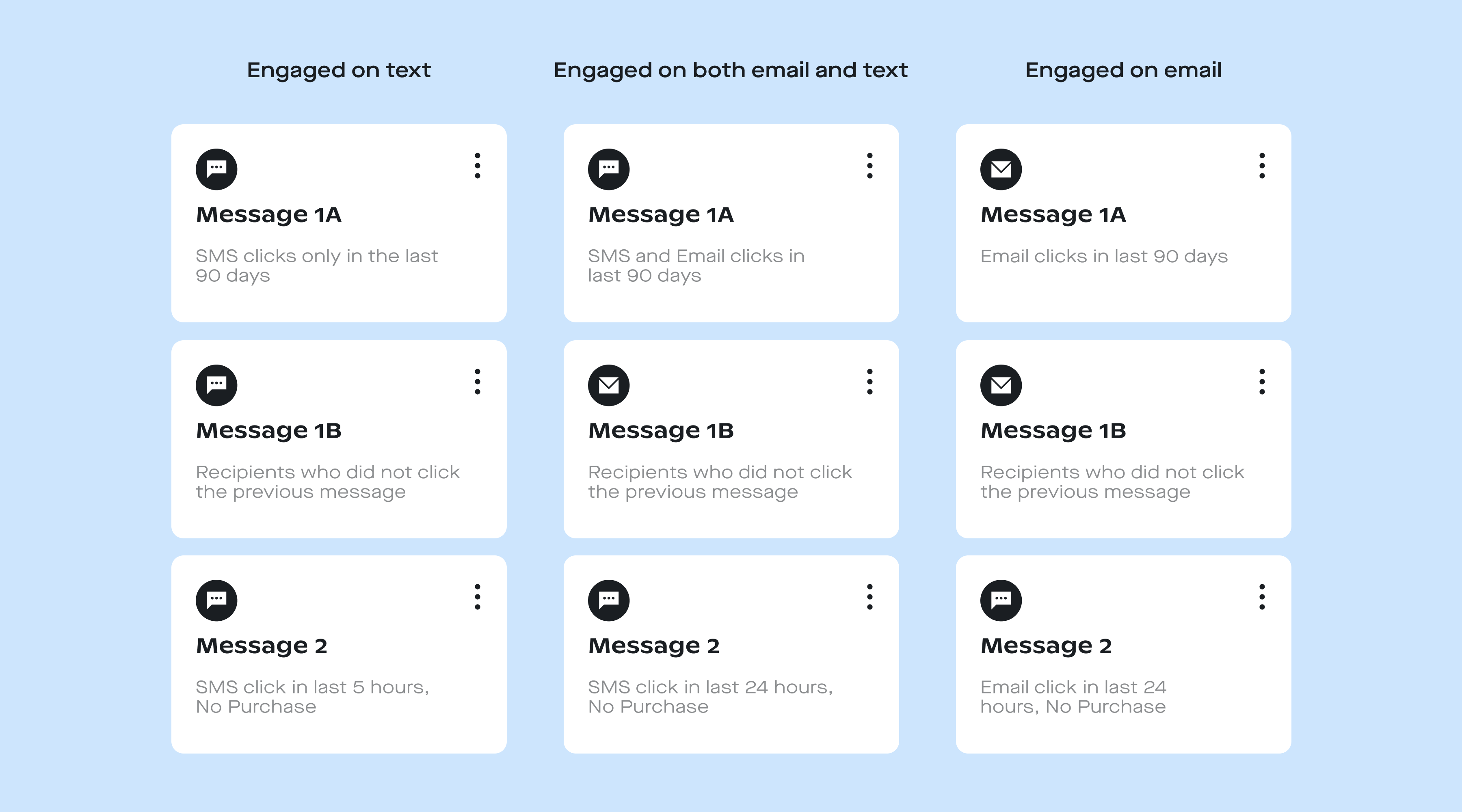
Amplify engagement touchpoints
The data is clear: subscribers who click links in messages are eight times more likely to purchase. To boost these crucial engagement moments, enhance your welcome series with extra messages, progressive offers, and compelling content. Use systematic A/B testing to pinpoint what resonates most with your audience.
Maximize engagement with behavioral triggers by activating all available abandonment journeys and product-focused automations, like price drop alerts and low-inventory notifications. Extended winback journeys can re-engage drifting subscribers, and personalized product recommendations in emails create relevant touchpoints. Dedicate special journeys to your highest-value segments to keep them engaged and spending.
Tailor Messaging to Engagement Levels
About 66% of text subscribers and 87% of email subscribers are unengaged and convert at much lower rates. Strategic segmentation is key to improving results.
Create dynamic segments to identify unengaged subscribers and exclude them from most promotional campaigns, reserving your strongest offers for them. This enhances deliverability and revenue, especially for email. When including unengaged subscribers in campaigns, use more compelling offers to rekindle their interest.
The shift from siloed channels to unified orchestration isn't just a tactical upgrade—it's a fundamental reimagining of how email and SMS work together to drive measurable business results. In an environment where marketing budgets have flatlined and every dollar must work harder, orchestration offers a clear path forward.
The opportunity is clear: subscribers engaged through both email and SMS are demonstrably more valuable, convert faster, and cost less to retain. The question isn't whether to orchestrate these channels—it's how quickly you can implement a strategy that turns this insight into measurable revenue growth.
The brands winning in today's constrained budget environment aren't the ones spending more—they're the ones orchestrating smarter. Now it's your turn.